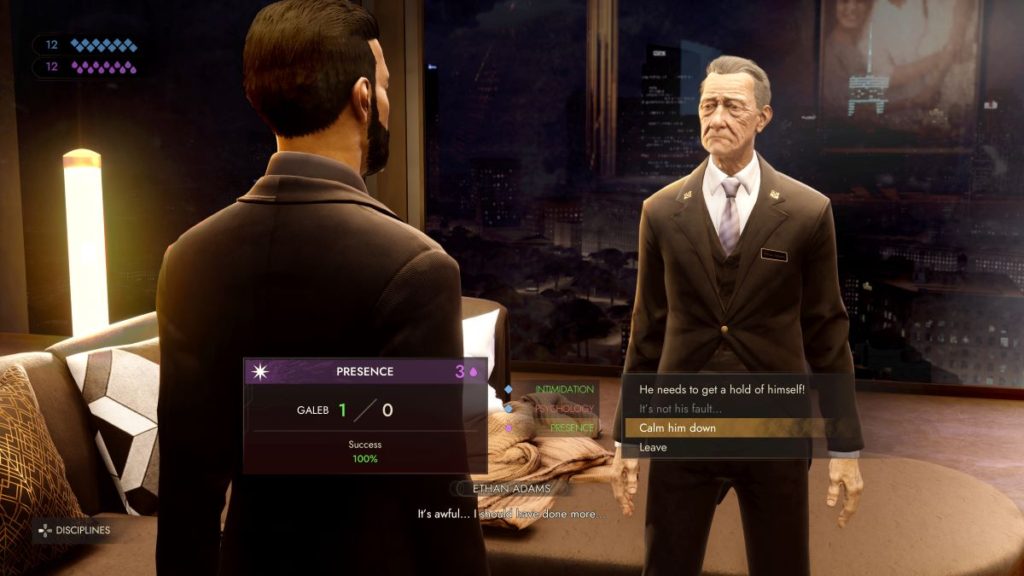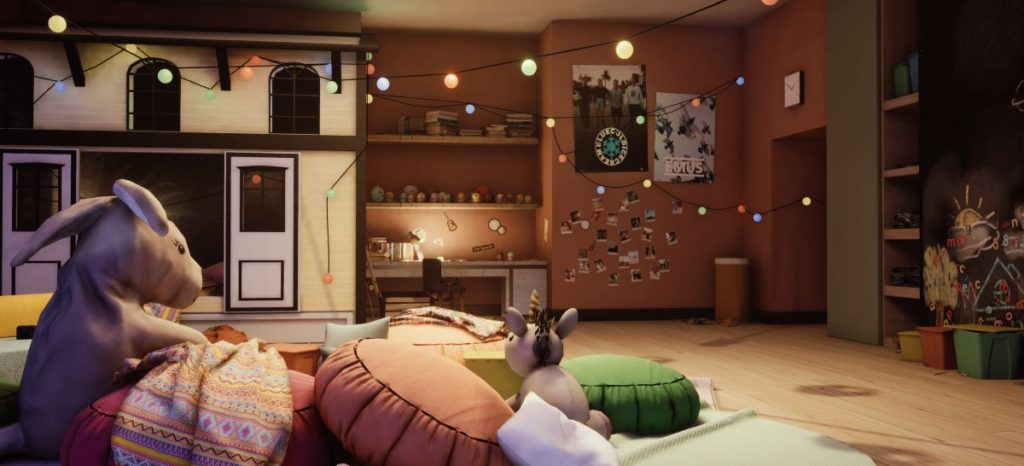Way back in the 90s, it was the bee’s knees to play role-playing games. I can’t remember the exact year that actual DnD games were brought back into prominence, but Vampire: The Masquerade caught that wave and never looked back. I faintly remember the hardback book for it and how cool it was at the age of 18 going through stories with friends and rolling the die. There was so much background to the entire experience, and it simply felt ‘more’ than another DnD game.
Fast-forward about 20 years or so, and we have Vampire: The Masquerade game make its way to consoles, reigniting those feelings of wonderment and a small desire to watch Blade again. The original game, which I didn’t play/review, was a step in the right direction for reviving the in-person experience on a digital platform. From what our reviewer told us, it was a story-heavy game that didn’t apologize for simulating its sire.
Here we are in 2022, and a new version of the game emerges called Vampire: The Masquerade – Swansong. Playing this for the first time on a console (or any system) has certainly brought back those old feelings from the 90s but can’t hide its roots despite its intentions.
Let’s get right to it.
Bringing some fangs to the game
The very essence of VM is the story it tries to tell. For any good DnD adventure, this is the cornerstone of its entertainment. Vampire: The Masquerade – Swansong is no different in its intentions. The story follows three separate vampires, Emem, Galeb, and Leysha. Each is assigned a piece of a mission that leads them to murder, mystery, and the occasional obsessive creep. Ordered by the Prince of Boston to go investigate disappearances and brutal murders, the trio set off on very different paths to discovering what could be the very thing that threatens their existence.
To say that the story in this game is leading the gameplay would be an incredible understatement. You will do more story following and branching dialogue that you will swear at times this is just a straight-up visual novel. As a visual novel, this would certainly work well. The story is intricate and there are wonderful moments of success and failure through responses and manipulation (you’re a vampire, you can trick people into giving you information) that can lead you down certain endings. While you will find yourself getting into the mystery of the story and uncovering some plots that only can be rivaled by a B movie version of The Godfather II, you will discover, as I did, that this is the main vein to this gameplay. Love it or hate it, this is what you’ve got in store for you.

Honestly, I don’t mind it, but if you are expecting something else more action-oriented, then you will want more besides becoming an investigator for a vampire crew. This story is like the vampire version of The Batman, where you fully realize politics and detective work are going to dominate the experience, even though you badly want some action to go with your adventure. Sadly, and much like the broody Batman, even though the gameplay design screams there is action to be had, it’s minimal at best. This is completely story-driven with a side of RPG. Is that appropriate for this game? Probably. It’s Vampire: The Masquerade at its core, and you mostly get story and imagination with that in-person experience. In a sense, this is a perfect replica of that experience.
Yeah, I was torn by this being so damn accurate. Kudos to NACON for nailing the DnD game and bringing that world of story twists and turns to life and making it interesting for the most part.
Gameplay that isn’t buried
So, what is the gameplay for Vampire: The Masquerade – Swansong? Good question. Most of the game revolves around investigations. Picture Hard Rain, but minus the quick time events, where you move around trying to gain access to the ‘next thing to unlock’ so that you can progress the story. Much like my critique of the story, this isn’t bad when you’re thinking about how it replicates the actual in-person game by the same name. You search, you find, you try things to see if they’ll unlock something, and then you figure it all out and move to the next small puzzle. Each bit and piece chips away at the goal of discovering whatever it is you’re looking for, but it requires you to look almost everywhere. This is a bit of a downfall for the game, as you will at times run into a brick wall. It’s not an impossible brick wall, but it is a brick wall, nonetheless. For example, Emem’s first mission was to find her friend Journey before the Prince found her. There was an issue with Journey screwing up a party and the Prince was going to have a chat with her. Emem must locate her, which required me to search for Journey from room to room in a giant multi-level area. I had to talk with almost everyone available before finally stumbling onto Journey. There were times when I thought I had it figured out and could move on to step two, but it ended up being a dead-end that kept me searching rooms I thought I had combed perfectly. I haphazardly ran into a clue that activated the next step of the search and finally led me to Journey. It just made the game seem a bit linear and rigid, but again, it nailed the DnD format.
To alleviate that feeling a bit, Vampire: The Masquerade – Swansong includes a massive backend that is stuffed with vampiric powers and ways to get through obstacles easier. Featuring a Skyrim-esque system for the characters, you can improve on skills in the areas of dialogue, exploration, and knowledge. With each upgrade for these areas, the detective work gets easier and easier. You also have physical, social, and mental attributes to boot. A good set of skills tree starters that make the game a bit more than just a walking/talking simulator.
And things get better on the backend.
The game also features Disciplines, which are a familiar skills tree scheme, where your tree branches out into upgradable skills. For example, trees can feature Auspex, Presence, and Celerity. Auspex is supernatural senses, Presence directly relates to how you can emotionally influence folks, and Celerity is how a speedy vampire can move to and fro. Each character has particular Disciplines they can upgrade and work on in the game that is directly tied to their stories. There are multiple levels for each character’s Discipline.

Again, the backend of this game is quite impressive and makes it more than just a branching visual narrative. I think NACON knew what they needed to do to upgrade this experience and they pulled it off just fine. The backend systems work brilliantly with pushing the story to more than just a story.
To upgrade the backend skills and Disciplines, you will need to do well on the journey. This means finding the best responses and getting the tasks at hand done that the story requires of you. Your character’s upgrades will equal out to more opportunities to gain XP to upgrade the trees. The more you get right during missions, the more improvement it means for you during the next mission, and the better set of skills to gain more XP. It’s all circular but pick and choose your upgrades wisely.
Now, should you just fail and get no real usable XP at the end of your story level, you can go back and replay it to do better. There is a level selection option in the main menu if you feel you can get more XP and proceed even further in the story in a better position to succeed. It certainly makes you want to replay levels at times, which is great when it comes to playing this game longer.
While I can’t say the overall gameplay design creates new avenues for the gaming industry in the future, I really must give a tip of the cap to NACON for bringing an accurate experience from book to PlayStation 5. It’s what you would expect from an in-person Vampire: The Masquerade experience. That might leave some non-DnD players wanting more but could be just what the vampire ordered for VM fans.
Graphical issues, loading, and dialogue
I reviewed this on the PlayStation 5, and it looked like a mid-generation game for the PlayStation 4. The characters were a bit last generation in texture, animation, and weird eye movement. The plus in the graphics department was the environments, which shined when they were in buildings/apartments/etc. but dragged here and there with background objects, such as cars (they were a bit plain). There were more pretty environments than not, though, as some of the locations were breathtaking. Anyway, the character models needed a bit more baking in the oven, but wowsers the environments were fantastic for the most part.
As for the loading times, I expected better from something running on PS5 hardware. While it wasn’t PS4 Horizon Zero Dawn bad, it just seemed to scoot along at a mid-walk pace. When the game goes from cutscene to gameplay, it takes a good 15-20 seconds to load at the beginning of the levels. That’s not horrible, but it should be better considering that other massive games, especially Horizon Forbidden West, take far less loading time and they have more to push through. This isn’t a dealbreaker by any means, but it was noticeable.

As for the dialogue in the game, it wasn’t bad. The performances were a bit over-the-top at times, and the graphics didn’t help, but it was as CW as I expected it to be. The actors seemed to have fun with the scripts, so that’s a big plus. The writing was about DnD level as you should expect.
Anyway, let’s wrap this up.
Conclusion
Vampire: The Masquerade – Swansong is a dialogue and story-driven experience with a side of detective to help push it all along. The gameplay was spot-on what you should expect from an in-person Vampire: The Masquerade session, but it may not be for everyone. If you’re looking for something more action-oriented, then this may not be your cup of tea.





